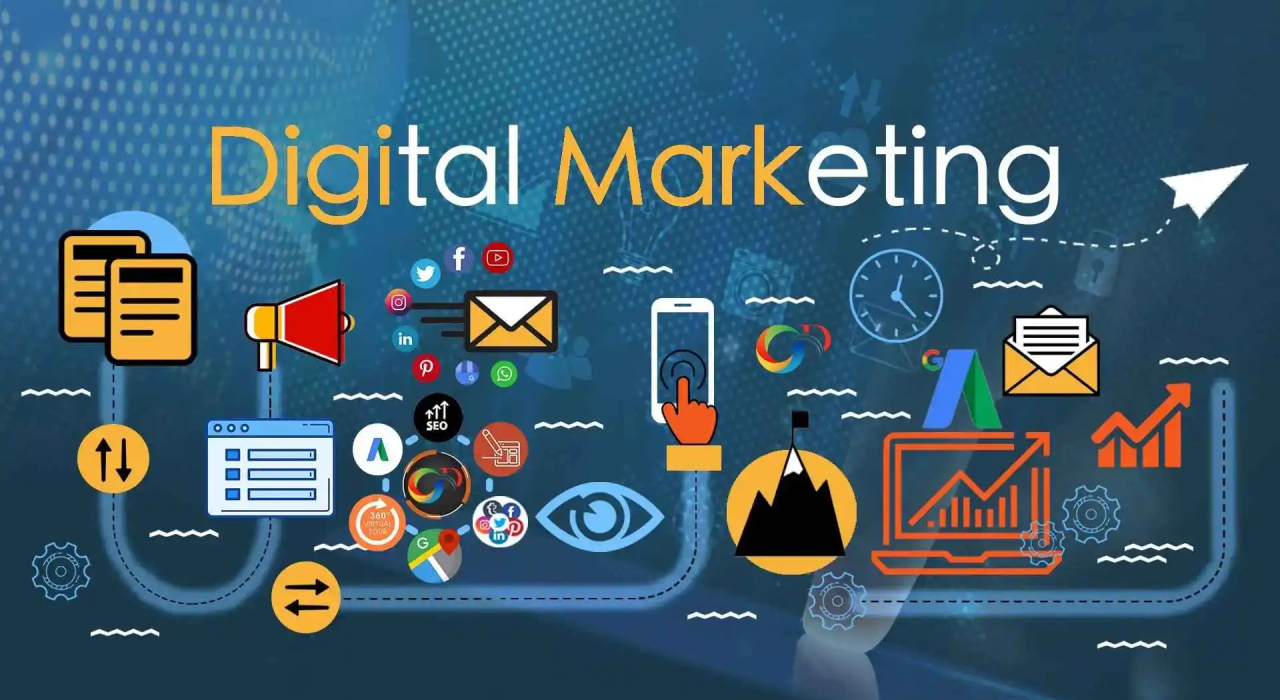Harnessing Data Analytics for Digital Marketing Insights

Data analytics is transforming the digital marketing landscape, turning guesswork into precise, data-driven strategies. But how do you effectively leverage analytics to improve your campaigns and maximize your return on investment (ROI)? In this article, we’ll explore how to harness the power of data analytics for better digital marketing insights.
The Importance of Data Analytics in Digital Marketing
Data analytics isn’t just about tracking numbers; it’s about understanding your audience and predicting their behavior. It helps marketers make informed decisions, refine strategies, and optimize content to resonate with their target market.
Why Data-Driven Marketing Matters
- Enhanced Decision-Making
Data eliminates assumptions. By understanding patterns and trends, you can tailor your strategies to deliver the right message at the right time. - Better ROI
When you use data to guide your marketing efforts, you reduce wasted resources and invest in tactics that yield the highest returns. - Improved Customer Experience
Data analytics can provide insights into customer preferences, allowing you to personalize your interactions and improve overall satisfaction.
Types of Data Analytics in Digital Marketing
Understanding different types of data analytics is crucial for effective marketing.
Descriptive Analytics
This type of analysis looks at historical data to answer, “What happened?” It helps you understand past marketing performance and identify key trends. For example, tracking website traffic or email open rates falls under descriptive analytics.
Diagnostic Analytics
Once you know what happened, you’ll want to understand why it happened. Diagnostic analytics digs deeper, uncovering the reasons behind specific outcomes. Did a particular campaign underperform due to poor timing, or was the content not engaging enough?
Predictive Analytics
Predictive analytics uses historical data to forecast future outcomes. Tools like machine learning algorithms can predict customer behavior, such as who is more likely to convert or which content will perform best.
Prescriptive Analytics
This type of analytics offers actionable recommendations. It uses AI and machine learning to suggest ways to optimize your marketing strategies. For example, it can help you decide on budget allocation or the best time to post on social media.
Collecting the Right Data
Data collection forms the backbone of any successful analytics-driven strategy. However, collecting the right data is more important than amassing large quantities of irrelevant information.
Key Data Sources for Marketers
- Website Analytics
Tools like Google Analytics can provide insights into user behavior, including page views, bounce rates, and conversion paths. - Social Media Analytics
Platforms like Facebook and Instagram offer built-in analytics to track engagement, follower growth, and the performance of individual posts. - Email Marketing Metrics
Understanding metrics like open rates, click-through rates (CTR), and unsubscribe rates can help you refine your email marketing strategy. - Customer Relationship Management (CRM) Systems
CRMs store valuable customer data, such as purchase history and interaction logs, which can be used for targeted marketing campaigns.
How to Turn Data Into Actionable Insights
Collecting data is just the beginning. The real magic happens when you turn that data into actionable insights.
Segment Your Audience
One-size-fits-all marketing rarely works. Use data to segment your audience into smaller groups based on factors like age, location, buying habits, or interests. Personalized marketing campaigns yield higher engagement and conversion rates.
Analyze Customer Journeys
Understanding how customers interact with your brand at each touchpoint can help you create more effective strategies. Track the customer journey from awareness to conversion and identify opportunities to improve the experience.
Optimize Your Content Strategy
Data analytics can show you which types of content perform best. For instance, if your video content has higher engagement than blog posts, you might consider producing more videos.
Using Data Analytics Tools Effectively
There are numerous tools available to help you analyze data, but which ones should you use?
Google Analytics
A must-have tool for tracking website performance. It provides a wealth of information about your audience, including demographics, behavior, and traffic sources.
HubSpot
HubSpot offers integrated analytics that cover everything from website performance to email marketing and sales. It’s ideal for marketers who want a holistic view of their campaigns.
Tableau
If you need to visualize complex data sets, Tableau is a great option. It transforms raw data into easy-to-understand dashboards and reports.
Hootsuite Analytics
For social media marketing, Hootsuite Analytics provides in-depth performance metrics, helping you measure the success of your social media campaigns.
Best Practices for Data-Driven Marketing
Data-driven marketing is not just about using analytics tools; it’s about applying best practices to maximize effectiveness.
Set Clear Objectives
Before diving into data, establish what you want to achieve. Are you looking to increase website traffic, improve conversion rates, or boost social media engagement? Clear objectives will guide your analysis.
Focus on Key Performance Indicators (KPIs)
Not all metrics are equally important. Identify and focus on KPIs that align with your goals. For example, if your goal is to boost conversions, track metrics like conversion rate and cost per acquisition.
Continuously Test and Refine
Data analytics is an ongoing process. Use A/B testing to experiment with different strategies and refine your approach based on what works best.
The Role of Artificial Intelligence in Data Analytics
AI is revolutionizing data analytics by automating data collection, analysis, and even decision-making.
Predictive Modeling
AI algorithms can predict outcomes based on historical data, allowing marketers to make proactive decisions. For example, AI can forecast which products will be popular during a specific season.
Chatbots and Personalization
AI-powered chatbots can collect data from user interactions and provide personalized recommendations, enhancing the customer experience and gathering valuable insights.
Challenges in Data Analytics for Digital Marketing
While data analytics offers numerous benefits, it’s not without challenges.
Data Privacy Concerns
With stricter data privacy laws like GDPR, marketers need to be cautious about how they collect and store user data. Always ensure compliance to avoid legal repercussions.
Data Overload
Having too much data can be overwhelming. Focus on collecting relevant data and use tools to filter out the noise, so you can concentrate on what truly matters.
Conclusion
Data analytics has the power to revolutionize your Digital Marketing Insights strategy, turning intuition into precision. By leveraging the right tools and focusing on actionable insights, you can optimize your campaigns, engage your audience, and achieve better results.
FAQs
How do I get started with data analytics for digital marketing?
Start with free tools like Google Analytics. As you get comfortable, consider investing in more advanced software.
Can data analytics help with social media marketing?
Absolutely! Analytics can show which posts perform best and help you understand your audience’s preferences, allowing you to create more engaging content.
What is the difference between predictive and prescriptive analytics?
Predictive analytics forecasts future outcomes, while prescriptive analytics provides actionable recommendations based on those predictions.
How can I ensure data privacy while using analytics?
Follow data protection regulations like GDPR and be transparent with your audience about how their data is used.
What are some common mistakes to avoid in data-driven marketing?
Avoid focusing on irrelevant metrics, failing to set clear goals, and not acting on the insights you discover.






